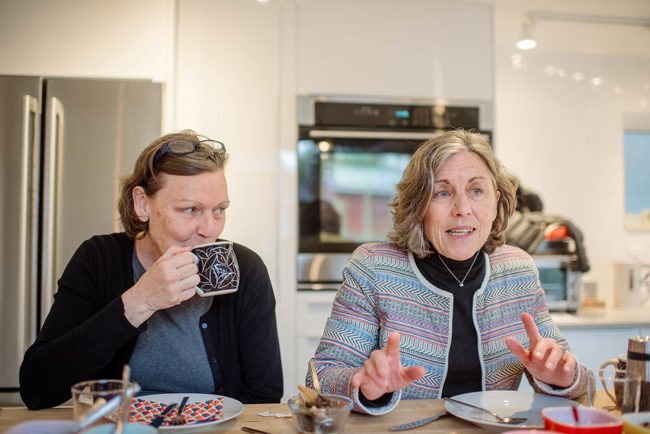
Is there anything sexier than preserves?
The correct answer, of course, is “no.” Preserves capture the bounty of the north’s brief but glorious growing season in a format that stores indefinitely, plays well with other foods, and creates flavors brasher than just about anything else on the plate.
That so many preserves are over-sweet, muted in flavor, and / or deadly dull isn’t a fault of the format — it’s an outgrowth of techniques that fail to capitalize on their potential. Food writer Beth Dooley and photographer Mette Nielsen’s lively new book Savory Sweet: Simple Preserves from a Northern Kitchen (University of Minnesota Press, $24.95) has the potential to seriously level up the preserves game in the Upper Midwest. It’s quietly revolutionary.
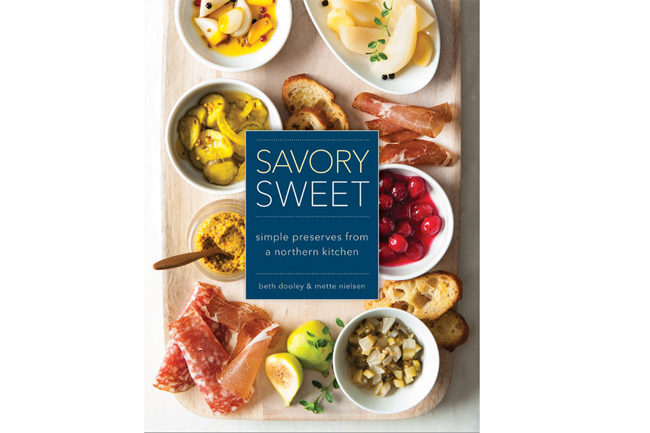
The book turns on a few clever ideas that play out in its pages. First, most books focused on preserves hearken back to the farm and call for the production of giant quantities, which presupposes large quantities of produce, huge pots, and lots of climate-controlled storage space. Second, many traditional preserves cookbooks create shelf-stable (as opposed to freezer) preserves, which require extensive processing that dulls flavor and mushes up texture. Finally, old-school preserves tend to be simple combinations of sugar with fruit, or salt with herbs and vegetables. The recipes of Savory Sweet are small-batch freezer preserves that combine subtle and novel ingredients, everything from Hot and Sweet Carrot Relish to Pickled Fennel with Lemongrass to Earl Grey Crab Apple Jelly.
We interviewed the authors at Nielsen’s studio / test kitchen in the Seward neighborhood of Minneapolis, and they put out a spread of coulis, chutneys, relishes, and syrups that made the book’s thesis tangible. The flavors popped like wildfire — tart, sweet, and acidic notes intense but in balance.
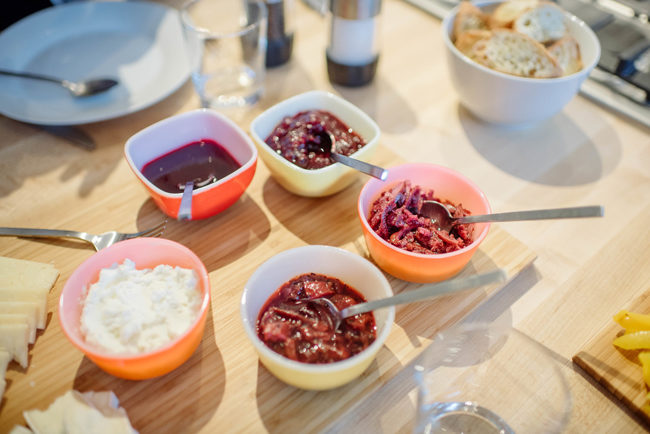
HEAVY TABLE: How does the message of Savory Sweet tie into the conversation about local food in the Upper Midwest?
METTE NIELSEN: I feel that preserving is the next step if you’re going to talk about a local food economy. We need to do it on a much larger scale than even this book. We need local preserving companies and local canning companies. This is a step, and we hope it inspires somebody. We have a very short growing season, but we grow an abundance. In my little yard, I had a spot that was maybe 10 feet by 4 feet and I got 300 pounds of tomatoes out of that.
BETH DOOLEY: It’s crazy what you can actually grow. Everything [in the book] is done in really small batches. Most other preserving books are based on the notion you have access to really huge amounts. And everything is done in a 10-inch skillet.
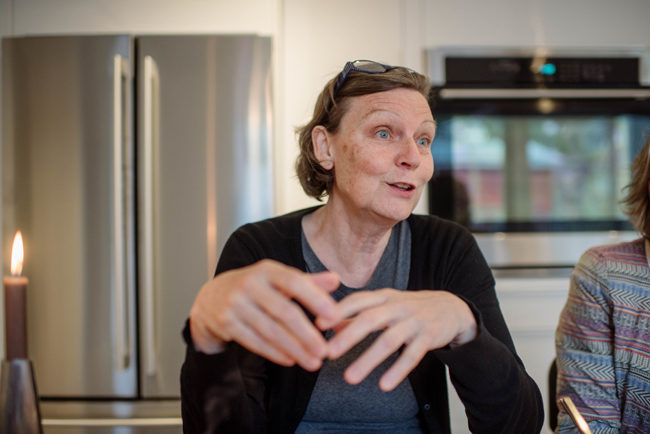
NIELSEN: There’s a great new book out of California, but it’s based on this enormous copper pan that’s $500. And then you get 40 jars of jam. Why not make this amount and you get four? The scale of it makes more sense. And a lot of other books are based on the notion that you have a cool, dark place to store things. Even in my house, my basement is way too warm. Things start to fade. You store that same thing in the freezer, and it looks bright and crisp and like something you want to eat.
DOOLEY: You’re cooking the fruit or vegetables for a shorter period of time, so they’ll look more colorful and taste brighter. A lot of the work that Mette did was to say, “we don’t need that much sugar!” That’s why these things taste good.
HEAVY TABLE: They’re very sharp and bright – everything’s really bold.
NIELSEN: It’s all based on the idea that you will store them on the shelf, but you don’t have to. You make four jars — give two of them away, eat one now, put one in the freezer.
HEAVY TABLE: The book really seems to cut back on the sugar we’re used to seeing in fruit preserves. It’s a lot more restrained, which lets other flavors come through. And true to the title, you guys seem to have a lot of fun playing with the sweet and savory roles.

DOOLEY: Exactly. You can try putting a few savory things at the end of a meal. Some of these recipes are seasoned with fennel or basil. Balsamic is really good with mascarpone or a good vanilla ice cream. Or something sweet like cherries for example, are really good with pork. We’re starting to see this collision of flavors, when you put really bright, contrasting flavors together you’ve got a much broader range of ways you can use them.
NIELSEN: Or raspberry syrup with chipotle peppers; it’s fabulous on ice cream. It’s so good.
DOOLEY: It’s also good on chicken!
We didn’t want to use the word “preserving,” but there really wasn’t any other word. It’s not about preserving; it’s about cooking something else, or transforming flavors. So you can have [preserves] around when you’re doing something simple — like sizzling a chicken breast on the grill or frying a pork chop, or making some scrambled eggs — and you’ve got something there that will brighten up a really simple dish.
Mette’s background in Denmark is that they don’t have fresh produce all year long, so to give some flavor and bounce to a plain piece of meat, you use these things.
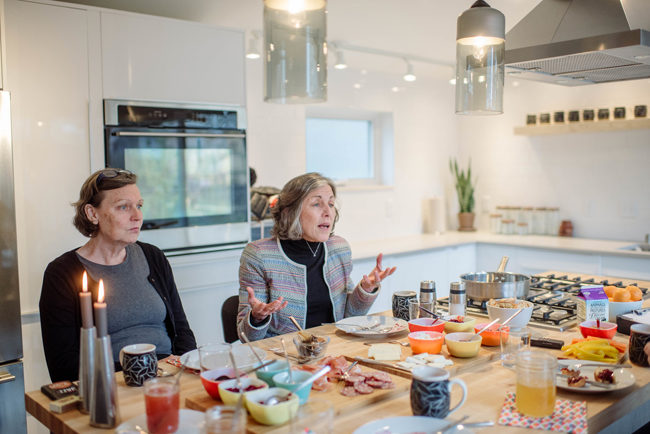
NIELSEN: A lot of these recipes use savory and sweet, which for me was a really fun way to play around with it. Because I grow tons of herbs, I just throw herbs in. With traditional canning recipes, you’re like, “You can’t do that! You’ll change the pH!” But that’s why you freeze it. It’s my personality — when someone says “You can’t do that!” I’m going to prove them wrong.
It’s also part of the Scandinavian sensibility. We have a Danish word, brugskunst, that translates as “usable art.” The idea is that something is beautiful but it has a function. We live in small spaces so we don’t necessarily have room to have both things. The food can translate into that. It can be both the savory and the sweet, but you only have to store one jar. If you store this in the freezer, you can thaw it out in 10 minutes with hot water from the faucet because it’s only 8 ounces.
I love when people stop by. My house might be really messy; I don’t care. I always have some food in the freezer. We can open up one of these jars and have some crackers and a cup of tea, and we can sit and visit. Plus they make amazing gifts. And there are things like the mustard that don’t need any cooking. You just soak things and use the food processor and you look like a genius!
DOOLEY: Mette has such a good sense of color and light — and you see that in the photos, and you see that in the food. She’s translated this sensibility into the condiments.
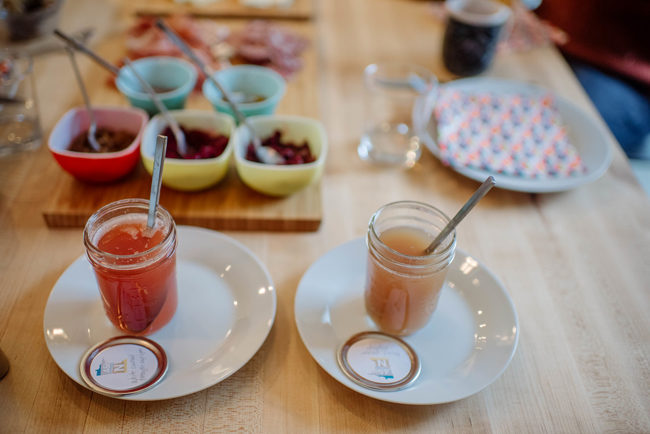
HEAVY TABLE: It seems like the book is really plugged into our region’s developing food voice. How does that connect with the recipes you’re presenting here?
NIELSEN: A lot of it has to do with understanding a northern sensibility, where the seasons are so present. We pay more attention to what’s going on outside. We live in the heart of the country, and our economy is food. We have a really vibrant local food movement and it just hasn’t caught the national eye yet. And frankly, I want us to own the narrative. We have to give it the language it needs to lift it up, and this kind of book really helps because it does have a northern sensibility. You see it across all the continents in the north. We have short, intense growing seasons, and they’re beautiful, and you want to celebrate them.
It’s the scarcity mentality. There was a wonderful quilt down at the MIA when they were doing quilt displays by a contemporary artist [Laura Foster Nicholson] who was inspired by the St. Paul Farmers Market, and she called it Bounty and Thrift. That’s what we’re sort of about. We know we’ve got this bounty, but it’s not there all the time, as it is in California or the South.
HEAVY TABLE: What are your go-to recipes from the book?
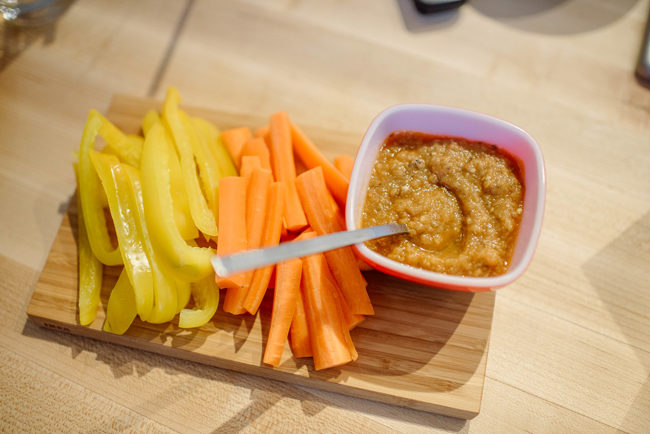
NIELSEN: One of my friends is addicted to the eggplant dips. They’re super-easy to make. The mustard is such an easy thing, and I keep playing with it constantly. It’s such small amounts, so I tweak recipes, and I might have a different herb on hand. It’s a constantly evolving thing.
DOOLEY: The ones I like are the ones that surprise people. The parsnip one is SO. GOOD. And my husband is Irish, and he’s like, “A jam is a frickin’ jam, and it goes on toast!” But we did this parsnip marmalade, and he tried it and said [in wonderment], “That’s really good!”
The other one that was a surprise, that I really love, is the pickled mushrooms. They’re really good, and you never think about pickling mushrooms! You can use any mushrooms. We get a lot of chanterelles; you can do Hen of the Woods, or shiitake …
HEAVY TABLE: Are there any chefs around here who are connecting to your philosophy on preserves?
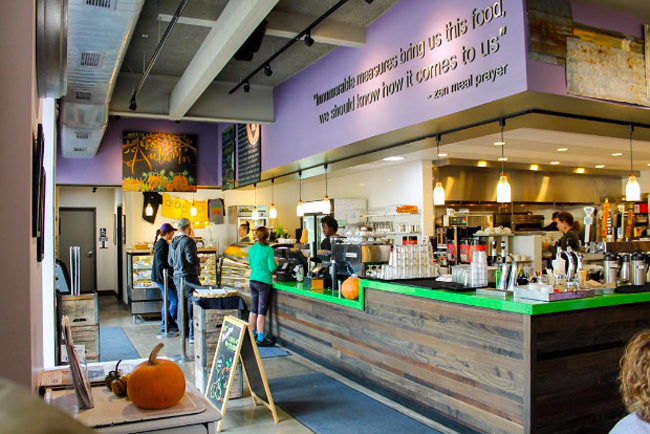
NIELSEN: Birchwood is definitely doing it. They’ve even got two of these recipes on the menu. Marshall [Paulsen] really speaks to this same sensibility. Of course once you translate these to a large scale, they change somewhat. In big batches you have to cook it for so long.
DOOLEY: Also Paul Berglund [of The Bachelor Farmer] does a really nice job. A lot of time we’ll go online and look at his menus and go, “That’s a really good idea!” Flavors that go together when you’re cooking, they’ll probably go together in preserves.
HEAVY TABLE: One final thought: There’s a connection here between having homemade preserves on hand and the idea of hygge, right?
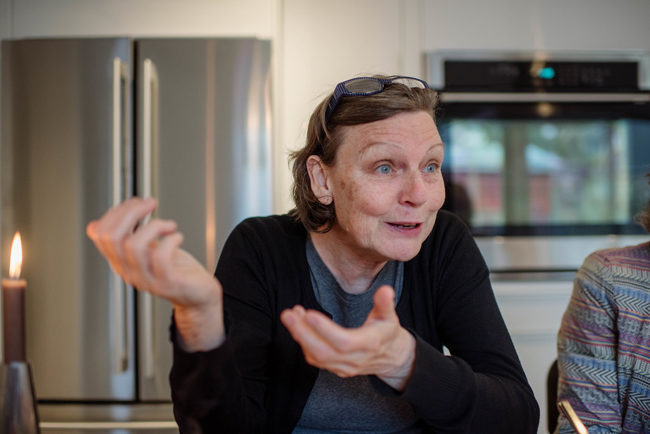
NIELSEN: I’m part of a big group of Danish women who meet at the Danish center, and we talk about — at some point we need to set people straight — that hygge is not just this winter thing, with the snow and a mug of hot cocoa. Hygge is the middle of summer, too. This is hygge! That you just take the time to be together, that is what it’s all about. You turn off the TV; you don’t check your social media; you need to set aside time to lead a simple life. It’s that Scandinavian thing that “this is good enough,” as opposed to the American “more more more more more.” To me, it’s about being content. This is a good life. I don’t need to stress.

